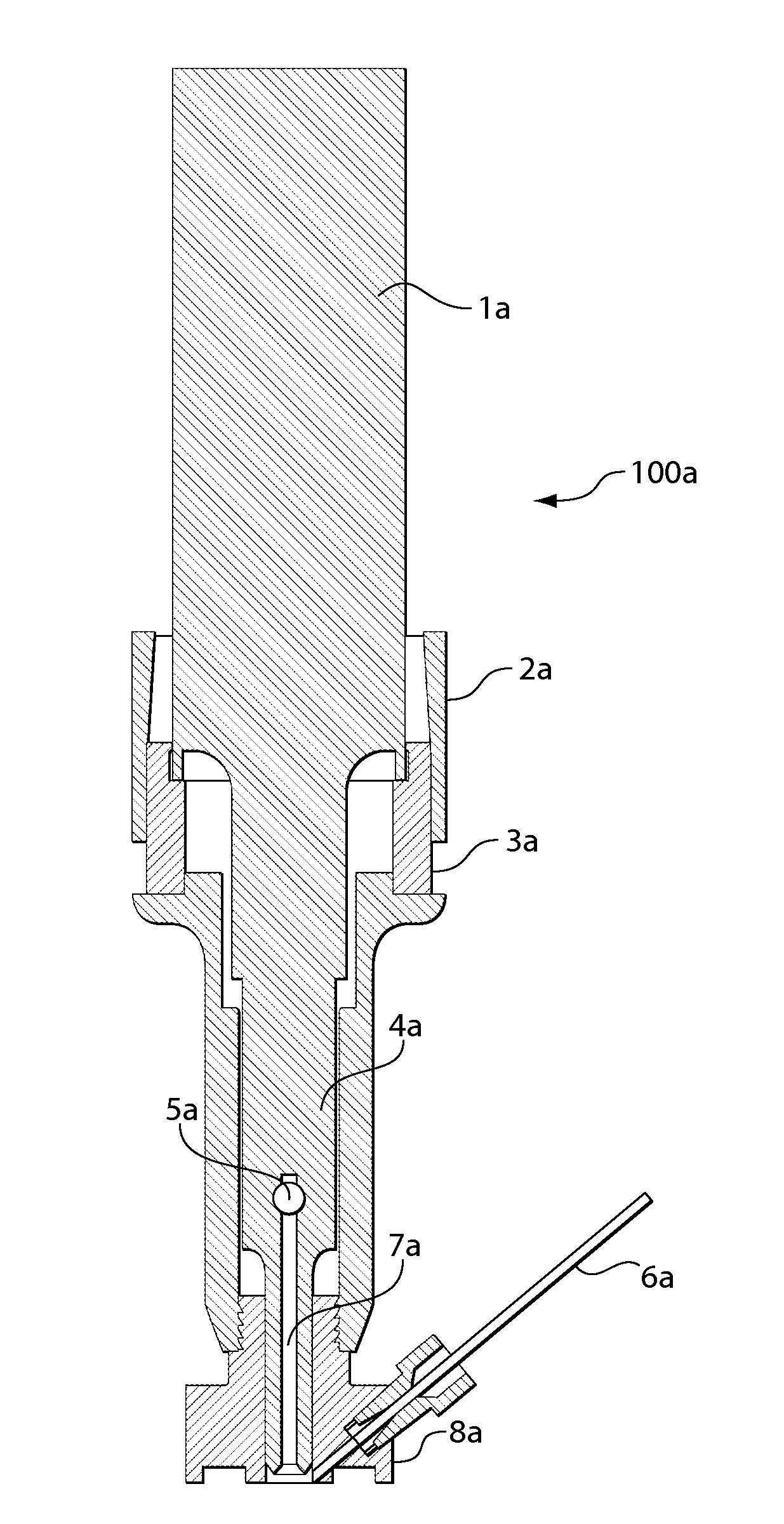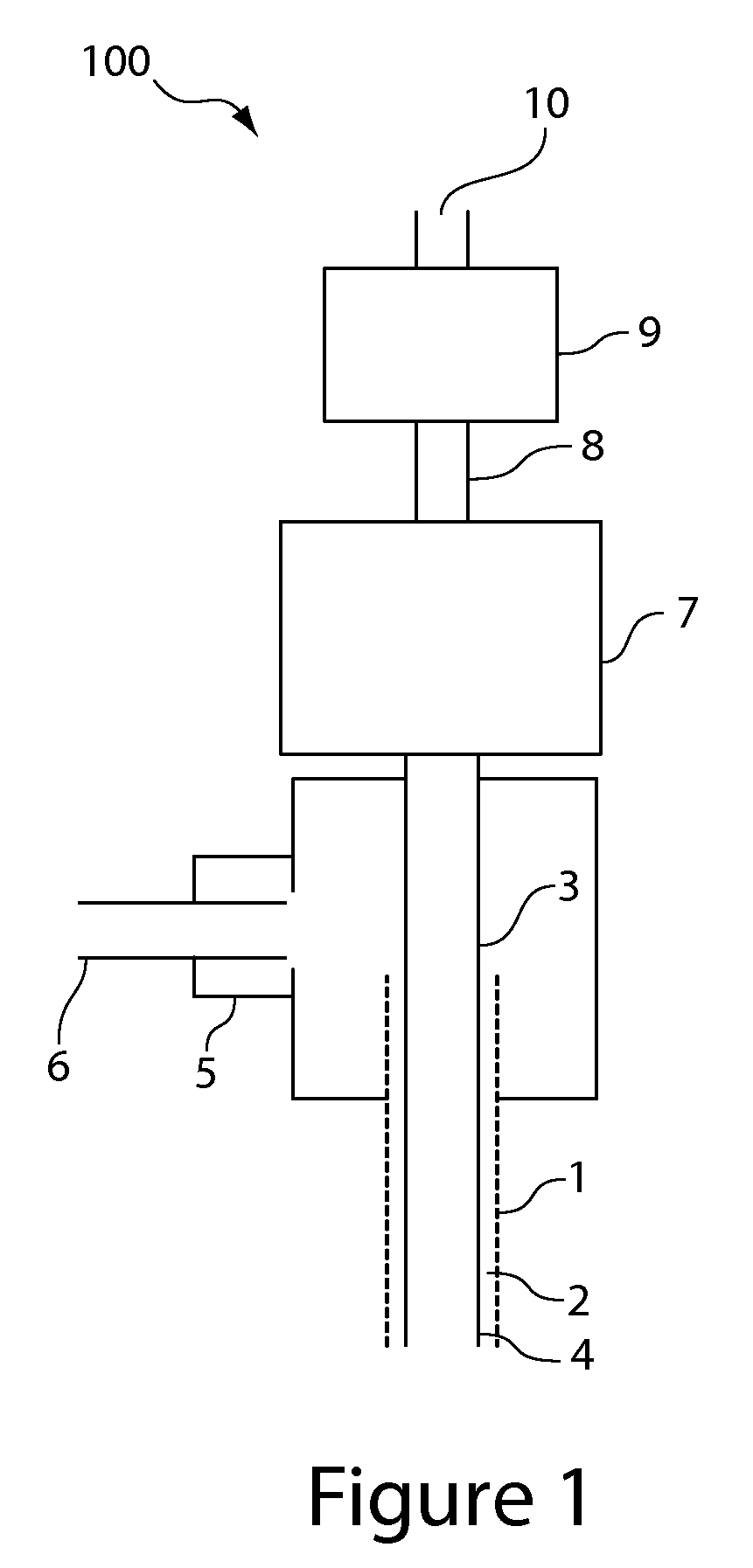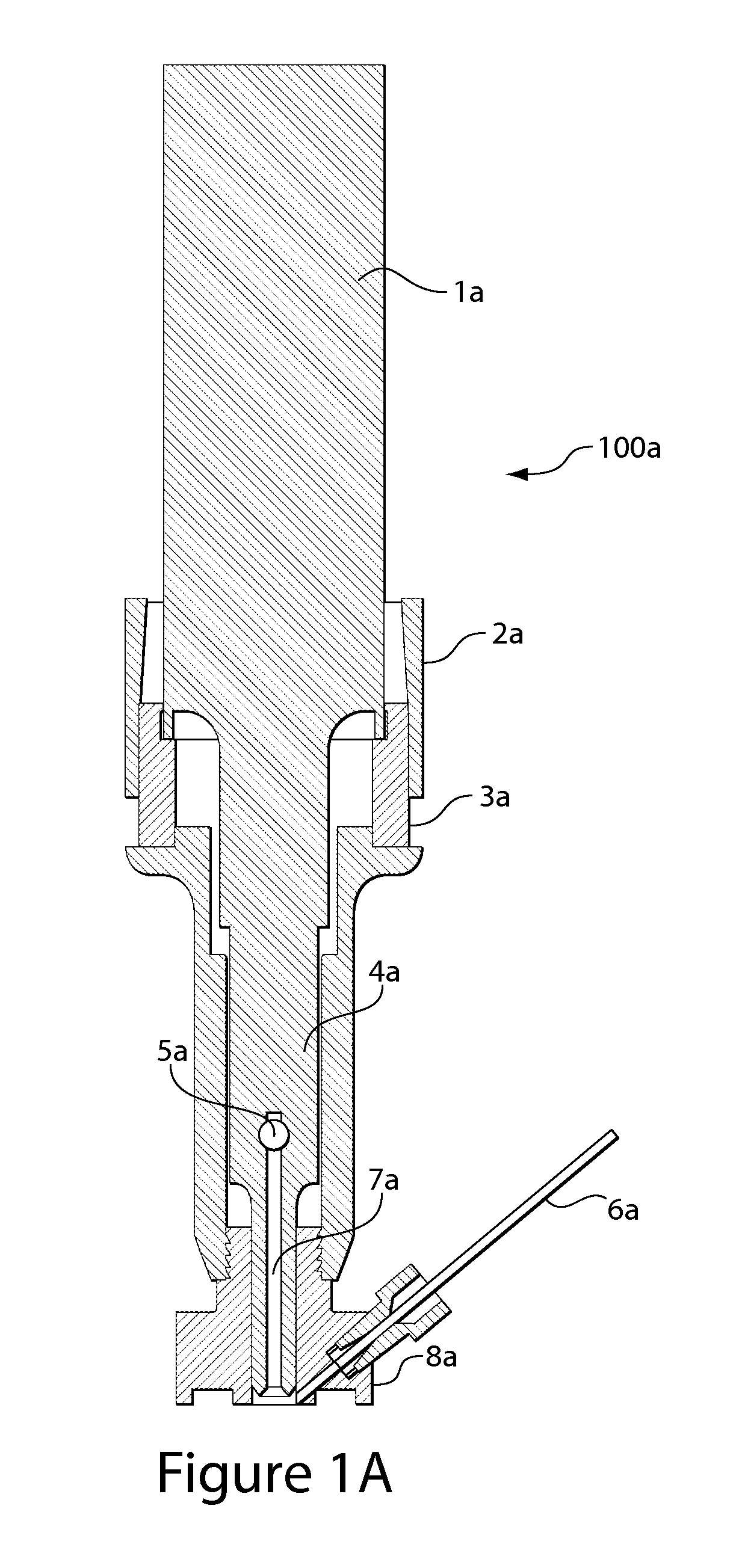Method and system for surface sampling
a surface sampling and surface technology, applied in the field of surface sampling, can solve the problems of limiting the throughput of the method, limiting the sample type and the physical size and shape of the sample that can be analyzed in the high vacuum environment of these processes, and significant challenges to the desorption and ionization of analytes from the surface, so as to improve the depth of sample interrogation and the range of analytes, and reduce or disrupt barriers
- Summary
- Abstract
- Description
- Claims
- Application Information
AI Technical Summary
Benefits of technology
Problems solved by technology
Method used
Image
Examples
example 1
[0050]Rhodamine dye (molecular weight 443) was deposited on an inert Teflon surface and was sampled by the probe head using an irrigant / solvent desorption solvent comprised of a 50:49.9:1 mixture of acetonitrile, water and formic acid, using a 40 kHz drive signal at 50 W power. The aspirated flow was coupled as the input to a Thermo Scientific LTQ linear ion trap mass spectrometer. FIG. 7 shows the selected ion current at m / z 443 and the normalized intensities.
example 2
[0051]Parathyroid hormone (PTH), of molecular weight (MW) 4117 was deposited onto a titanium surface and was then sampled and analyzed as in Example 1. The protonated ions were detected as shown in the spectrum of FIG. 8.
example 3
[0052]After dosing with clozapine at 50 mg / kg, a rat was sacrificed and the probe was used to gather a sample from an intact kidney. FIG. 9 shows the MS / MS mass spectrum of m / z 327±1.5 corresponding to the protonated ion of clozapine (MW: 326), sampled as in Examples 1 and 2. The inset shows the structure and the site of cleavage of the ion resulting in a neutral loss of 57 Daltons and the resultant ion at m / z 270.
PUM
| Property | Measurement | Unit |
|---|---|---|
| frequency | aaaaa | aaaaa |
| frequencies | aaaaa | aaaaa |
| frequencies | aaaaa | aaaaa |
Abstract
Description
Claims
Application Information
 Login to View More
Login to View More - R&D
- Intellectual Property
- Life Sciences
- Materials
- Tech Scout
- Unparalleled Data Quality
- Higher Quality Content
- 60% Fewer Hallucinations
Browse by: Latest US Patents, China's latest patents, Technical Efficacy Thesaurus, Application Domain, Technology Topic, Popular Technical Reports.
© 2025 PatSnap. All rights reserved.Legal|Privacy policy|Modern Slavery Act Transparency Statement|Sitemap|About US| Contact US: help@patsnap.com



